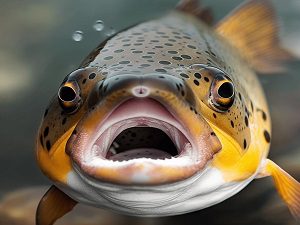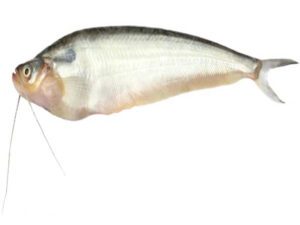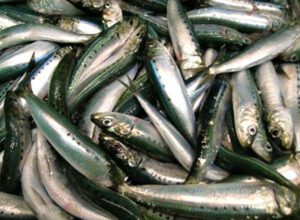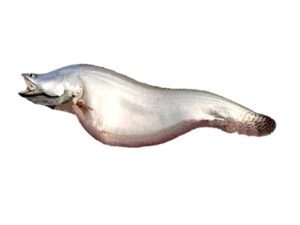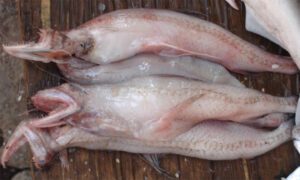The Kinki fish is a species of marine ray-finned fish. It belongs to the subfamily Sebastinae. It is mainly found in the North Pacific ocean from the Sea of Okhotsk north as far as the Navarin Canyon in the Bering Sea and from Stalemate Bank and Ulm Plateau in the Aleutian islands east and south to Cedros Island in Baja California.
The Kinki is a demersal fish with a depth range between 17 and 1600 meters. But the fish is most commonly found in depths less than 100 meters. However, read more information about this fish species below.
What is Kinki fish?
The Kinki fish is a popular and well known fish species which is found in the North Pacific, particularly around Alaska and northern Japan. It is typically reddish-brown in coloration with a distinctive appearance. It is also known by some other names such as Alaska rock fish, shortspine thornyhead, channel rockcod, shortspine channel rockfish, spinycheek rockfish, idiot fish, idiot cod etc. The scientific name of this fish is Sebastolobus alascanus.
English name
English name of these fish is Kinki fish or Alaskan rockfish.
Characteristics
The Kinki fish have several distinctive physical characteristics which make them apart from other fish species. They have a robust, elongated body with a slightly compressed shape. Their most distinctive physical characteristics is their eyes which are relatively large as compared to their body.
This fish features large pectoral fins and a long dorsal fin that runs along its body. In terms of coloration, the Kinki fish display a reddish-brown to orange coloration, often with lighter spots or mottling.

Size and weight
The Kinki fish typically grow to about 50 to 76 cm in length. Their average body weight is between 5 to 10 pounds. Although, some fish may become even large and weigh more.
Diet
Feeding habits of the Kinki fish can vary based on their age and the availability of prey in their natural habitat. They are mainly fed on a diet consisting of small fish, crustaceans, and various types of invertebrates.
Reproduction
The Kinki fish has a unique reproductive strategy. They are ovoviviparous, that means they give birth to live young rather than laying eggs. The embryos develop inside the female fish’s body. Their main breeding season typically occurs in late winter to early spring.
The female fish are able to produce a large number of larvae. The exact number can range from several thousands to tens of thousands, depending on the health and size of the female fish. The larvae are planktonic for a period before settling on the ocean floor as juveniles.
Lifespan
The Kinki fish are long lived fish species. Their average lifespan is between 20 to 30 years.
Uses
The Kinki fish is popular and mainly used as food. The fish is known and popular for its rich, buttery flavor and flaky texture. It is a commercially important fish species of its native range.
Cooking and recipes
Cooking Kinki fish is very easy and simple. There are some popular and traditional recipes available to try. Some popular recipes and cooking ways are:
Grilling: Grilling is the most common and popular way for enjoying this fish. For grilling, brush the fillets with olive oil, season with salt, pepper and you favorite herbs. And then grill for about 4-5 minutes per side.
Baking: Baking is a healthy way of cooking this fish. For baking, place the fillets in a baking dish, drizzle with lemon juice, and season. Then bake at 400°F for about 15-20 minutes.
Steaming: For steaming the Kinki fish, season the fillets with ginger and soy sauce. And then steam for about 10-12 minutes.
Taste
The Kinki fish is very tasty. It has a mild, rich and buttery flavor with a slightly sweet undertone. The flesh is flaky and tender, and able to absorb flavors from seasonings and marinades (which enhances its taste in dishes).
Nutrition
The Kanki is a highly nutritious fish. A 100 grams serving of this fish provides:
- Calories: Approximately 120-150 calories
- Protein: About 20-25 grams
- Fat: 4-8 grams (with omega-3 fatty acids being a significant component)
- Carbohydrates: 0 grams
- Vitamins: Good source of B vitamins, including B12
- Minerals: Contains essential minerals such as selenium, phosphorus, and potassium.
Health benefits
Consuming Kinki fish provides several health benefits. It is a good source of high-quality protein which supports muscle growth, repair and overall good health. It is rich in omega-3 fatty acids, and it is beneficial for heart health. Omega-3 fatty acids also helps to reduce inflammation and may lower the risk of chronic diseases. It is also low in calories and fat, and a good source of some essential vitamins and minerals.
Price
Exact price of the Kinki fish depends on numerous factors and can vary from place to place. Its price vary based on location, season, freshness etc. Generally average price of fresh Kinki fillets can vary between $10 to $20 per pound. Frozen fillets generally costs less, with an average price between $8 to $15 per pound.
Frequently asked questions
People often ask questions related to this fish species. Here we are trying to list the frequently asked questions about Kinki fish.
What is Kinki fish?
The Kinki is a species of rockfish native to the North Pacific, particularly around Alaska and Japan.
How to cook Kinki fish?
You can cook Kinki fish in many different ways. Some popular and common cooking ways are grilling, baking, stewing etc.
Why is Kinki fish so expensive?
Yes, Kinki fish is relatively expensive mainly due to its limited supply, harvesting and handling costs, and seasonality. It is also highly prized for its rich, buttery flavor and flaky texture. It is a popular choice in various culinary dishes, especially in Japanese cuisine.

